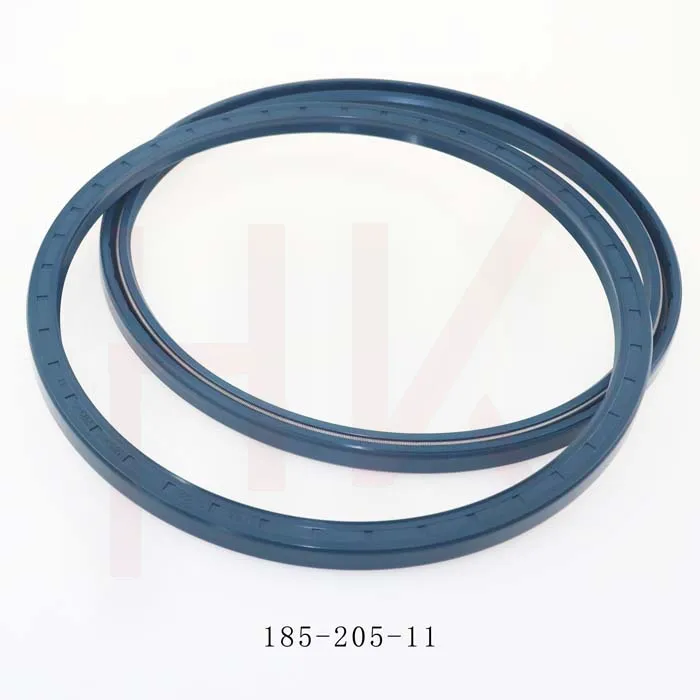Dec . 29, 2024 10:42 Back to list
Understanding the Function and Importance of Piston Wiper Rings in Engines
Understanding Piston Wiper Rings A Technical Overview
Piston wiper rings play a pivotal role in the functionality and longevity of hydraulic and pneumatic cylinders, which are vital components in many machinery and equipment. These rings are specifically designed to maintain a seal between the piston and the cylinder wall, preventing the leakage of fluid, dirt, and contaminants. This article explores the composition, types, and applications of piston wiper rings, shedding light on their importance in mechanical engineering and industrial applications.
Composition and Design
Piston wiper rings are typically manufactured from a variety of materials, including nitrile rubber, polyurethane, and polytetrafluoroethylene (PTFE). The choice of material depends on the specific application, as different materials offer varying degrees of resistance to temperature, pressure, and chemical exposure. For instance, nitrile rubber is often used in environments where oils and fuels are present, while PTFE is favored in applications requiring a high chemical resistance.
The design of wiper rings is equally important. They are typically shaped like a thin, flexible band that fits snugly into a groove around the piston. This design allows the ring to compress against the cylinder wall, creating an effective seal that prevents the entry of contaminants while allowing the hydraulic fluid to function smoothly. The tolerance levels in design are critical; too loose a fit can lead to leakage, while too tight can induce excessive wear.
Types of Piston Wiper Rings
There are several types of piston wiper rings, each tailored for specific applications and operating conditions. The most common types include
1. Single-acting Wiper Rings These are designed to seal in one direction, typically used in applications where fluid pressure acts on one side of the piston only.
piston wiper ring

3. U-Cup Wipers Shaped like a “U,” these rings are excellent for dynamic applications as they can adapt to varying pressure levels and maintain a tight seal.
Each of these designs serves unique operational needs, making it essential for engineers and manufacturers to carefully select the appropriate type for their specific applications.
Applications and Importance
Piston wiper rings are used in a wide range of industries, including automotive, aerospace, manufacturing, and construction. They are commonly found in hydraulic cylinders, pneumatic actuators, and various machinery that require fluid movement to operate efficiently.
One of the most critical functions of a piston wiper ring is to protect other internal components of hydraulic or pneumatic systems. By preventing debris and contaminants from entering the assembly, the wiper ring prolongs the lifespan of seals and other moving parts, reducing maintenance costs and downtime. Moreover, effective sealing results in enhanced performance, efficiency, and safety of machinery, which is crucial in industrial settings.
Challenges and Maintenance
Despite their importance, piston wiper rings can face challenges. Common issues include wear and tear due to exposure to environmental factors, incorrect installation, and the influence of extreme temperatures or pressures. Regular inspections and maintenance are vital to ensure the rings perform optimally. Engineers often recommend replacing wiper rings as part of routine equipment servicing to prevent potential failures.
In conclusion, piston wiper rings are integral components in various mechanical systems, ensuring efficiency, safety, and durability. Their design and material selection are crucial for their performance and reliability. As technologies advance, the development of more advanced wiper rings will continue to evolve, enhancing the performance of hydraulic and pneumatic systems across industries. Understanding their properties, types, and applications serves as a foundation for engineers and professionals to make informed decisions in their usage and maintenance.
-
TCN Oil Seal Metal Ring Reinforcement for Heavy Machinery
NewsJul.25,2025
-
Rotary Lip Seal Spring-Loaded Design for High-Speed Applications
NewsJul.25,2025
-
Hydraulic Cylinder Seals Polyurethane Material for High-Impact Jobs
NewsJul.25,2025
-
High Pressure Oil Seal Polyurethane Coating Wear Resistance
NewsJul.25,2025
-
Dust Proof Seal Double Lip Design for Construction Equipment
NewsJul.25,2025
-
Hub Seal Polyurethane Wear Resistance in Agricultural Vehicles
NewsJul.25,2025
-
The Trans-formative Journey of Wheel Hub Oil Seals
NewsJun.06,2025
Products categories
















